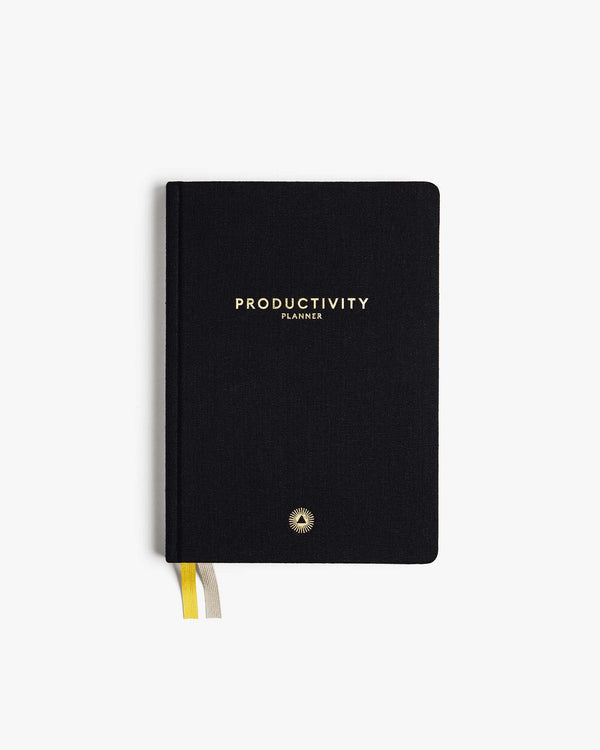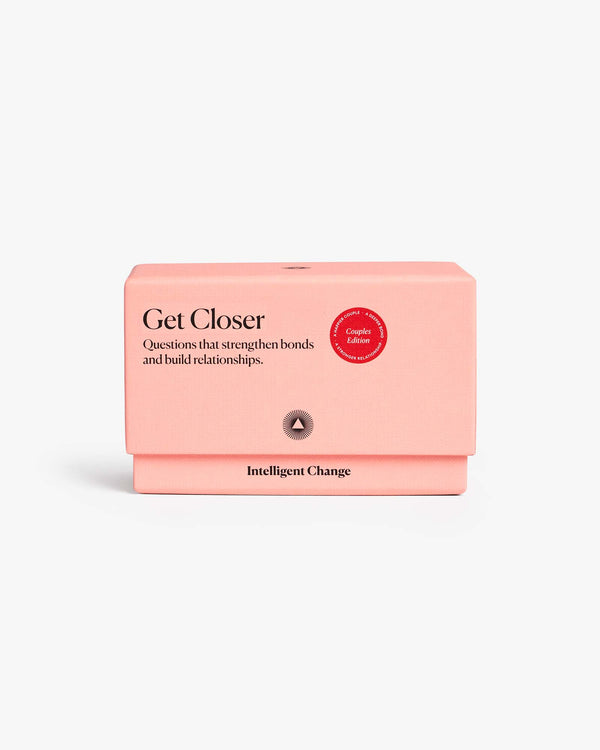Best Time Management Tips

For everyone on Earth, one day is exactly 24 hours long. However, some people seem to be getting more things done within this tight timeframe than others.
Is this because they’re capable of slowing down the clock? Do they work much harder and faster than you do? Or maybe they possess some rare talents you’ll never get a grasp of? Of course not. They are simply well-organized and have excellent time management skills.
Would you like to become the person who gets more things done in a day? If the answer is yes, you could probably use some good time management tips.
But first, what is time management all about?
What Is Time Management?
When you hear someone talking about “management this” “management that”, the umbrella topic is always organization.
Time management, therefore, refers to planning and organizing our time:
- Creating an order in which to complete various tasks and activities, to save more time;
- Estimating the amount of time necessary to finish each task;
- Knowing how and when to take breaks and use them effectively, etc.
Good time management is not about working faster or harder, it is about working smarter and increasing your effectiveness.
What Are the Benefits of Good Time Management?
Good time management increases productivity and ensures you finish your tasks on time. And claiming this is not just common sense: studies have something to say as well.
A 2019 study revealed that students with enhanced time management skills had not only greater academic performance compared to those who lacked time management skills, but their overall mood and psychological state was in better shape as well.
They reported lower anxiety and depression levels, as well as a higher satisfaction with their study-life balance. What seemed to be the most important factor for successful students in this study was the perception of control over their time.
What does this all mean?
If you’re in control of your time, you gain more control over your life, therefore reducing anxiety and uncertainty, and improving your productivity. Great, right?
So, to sum it up, here’s what good time management brings you:
- Instead of getting all stressed out about breaking deadlines, time management helps you get realistic and stay on track with your tasks, reducing stress in the process;
- Instead of spending your whole day on work, you’ll have more time for yourself and the people you love;
- Instead of struggling with the same tasks over and over again, good time management opens space for searching for new (job) opportunities; Instead of getting lost in a feeling of incompetency and inadequacy, time management will help you achieve your goals.
To help you achieve your goals and become everything you’re capable of becoming, we’re sharing some time management tips to support you along the way.

Time Management Tips to Make Your Days More Productive

Here’s a long list of time management tips and hacks that should help you become a better-organized person. You not necessarily have to implement all of these tips, especially not at once, but if you start working consistently on improving your time management skills, you may notice that you’re slowly adopting one after another. Let’s get started!
1. Analyze the Current State: How Do You Spend Your Time Right Now?
Before implementing anything new, take some time to reflect and figure out how you’re doing right now.
How do you spend your days? When do you take breaks and how long are they? How many time do you spend on your phone and scroll social networks? Do you practice self-care? And so on.But how do you measure this? One way is to set up a reminder every hour or so to write down what you’re doing at that very moment. This is fine, but not informative enough. A better way is to download a time management app and track your behavior and time management for at least one week.
Once you’re done tracking your own behavior as a preliminary measure, download the reports and evaluate them to identify space for improvement.
For example, you might be spending a lot of your time procrastinating on social networks or attending meetings that could just have been discussed through email.
Here are some apps recommendations you may enjoy to measure your time management skills:
Once you get an idea of how much time you spend on each task, it’s time to decide what's truly important.
2. Set Clear Goals
Okay, so fulfilling daily and weekly tasks is great, but have you ever tried gearing your life towards greater goals? A 1-Year plan? A 5-Year plan?
Once you’ve identified where your time is being allocated and how it can be improved, you’ll need to figure out what you want to achieve, and then reorganize.
We know that formulating goals is not always easy–you can easily fall into a trap of creating too particular or too general goals, losing the perspective and the why behind every goal. The best recipe for formulating achievable goals is to use the SMART matrix.
S—Specific. This means that your goals are well-defined and unambiguous (who, what, when, where, why).
M—Measurable. Measures are specific progress indicators telling you how far from your goal you are.
A—Attainable. A good goal needs to be possible to achieve. Do you have enough resources, and has anyone done that before you so you can learn from their experience?
R—Realistic. The goal needs to be based on the reality you live in, and relevant for you. Are you capable of reaching that goal? Is it really possible to do it? What will it take to complete it?
T—Time-bound. You should have a clearly defined start and end date. You need urgency.
Let’s look at an example.
Imagine this: you’re running a pastry shop. You have three employees: two people serving the customers, and one in the back, preparing delicious pastries. You have tons of customers, and you’re always around helping out and supervising.
For the last month or so, you’ve been coming home feeling extremely exhausted, late in the evening when your family is already asleep. Before going to sleep, you read Google reviews: people like your pastries, but they complain about how slow you are; how long they wait in lines; how quickly you run out of products. You realize you need to do something and create a positive change in your life, as you want to see your family more often and satisfy your customers’ needs better.
After measuring your activity flow for a week, you’ve realized you need to formulate some goals. Which one is better:
- I want to expand my business and earn more money, so I could employ more people and be at home more often.
- By January, I’ll have a new store opened with three new employees and one manager for both stores. I have around $50,000 in my bank account, and I will ask for a bank loan of another $50,000, which should cover renting and equipping the new space, and the first salaries. My goal is to have a positive cash-flow by the end of June.
Needless to say—the second goal is far better. Why? Because it’s SMART and clear. Once you have your goals well defined, you should start thinking about getting a productivity planner to create an action plan and track your progress.
3. Divide Goals Into Steps

After setting some of your big goals, it’s time to plan how to achieve them. It’s similar to creating a grocery shopping list. Will you write down “go grocery shopping” on your list? No. You’ll list all the specific things your household needs. So, why would it be any different with your life goals? In order to achieve something, we usually need clear and specific directions in order to take action.
For example, if your big goal is to finish and defend your thesis, here’s how to divide it into steps:
Break goals into milestones
In this case, the milestones could be: writing the thesis proposal, finishing the research process, creating the thesis outline, writing the thesis, proof-reading and editing the document, submitting the thesis, and preparing the oral defense of the thesis.
Set up time boundaries for each milestone
For example, you probably need one or two weeks to finish the proposal, while the research process can take even a couple of months. Creating the thesis outline should take no longer than a week or two while writing and proof-reading can last two or three months. Try to be realistic by consulting a colleague who’s already been through this, your professor, or Google.
Create a task outline
Dividing goals into milestones is great, but that is still quite broad, which is why it would be best to divide each milestone into tasks. This way, once you’re ready to dive into a specific milestone, you know exactly where to start and what comes next. In the thesis case, you might want to split proposal writing into literature research, choosing the methodology, formulating the hypothesis, and so on. Once you have all your tasks ready, you can organize them in days and weeks.
What can be extremely helpful at this point is the above-mentioned Productivity Planner. This well-structured planner is designed exactly for this purpose: structuring and organizing your goals and tasks. But that’s not all.
4. Prioritize Your Tasks
Welcome to another benefit of using The Productivity Planner. So, not only does it help you structure your goals, but it also forces you to make priorities. Why is that important?
How many times have you found yourself struggling with some minor issues for hours, while the actual task at hand you wanted to achieve was sitting on standby? If you struggle with time management skills, we assume—many times.
The Productivity Planner is designed to help you create a clear vision for the week, outline your weekly tasks and selectively assign them to a day of the week to ensure they’re all completed by the end of the week. There’s also a short introductory note that informs you how you should work on the most important tasks first, and then proceed to the remaining tasks of importance for that day.
So, besides “primary task”, there are also two “secondary”, and a couple of “additional” ones. Only when you complete the first three tasks for the day, you proceed to the “additional” column. Did we mention that it allows room for 7 days a week so you can be more productive where and when you need, both in your personal and professional life?
One of the major time management tips we strongly recommend is to work on the most important tasks early in the morning.
Harvard biologist Christopher Randler discovered that early birds are more productive than those who wake up late. Early risers have better problem anticipation, a proactive mindset, and are in general more successful.
Why?
The answer is simple—part of the day when we have the most energy is in the morning, an hour or two after waking up, and it lasts until somewhere around 3 pm. After that, our attention span decreases and we start to lose focus.
Of course, you can make modifications in The Productivity Planner according to your specific needs. For example, take a peek at how Leticia Mooney, CEO of content marketing and strategy agency Brutal Pixie, uses this fabulous tool.
5. Use the Focus Time Technique
The Focus Time Technique is one of the best time management techniques there is. It consists of six steps:
- Choosing your task;
- Setting up a sequence of 30-minute alarms;
- Working on the task for 30 minutes;
- When your timer rings–you check your task;
- Take a short 5-minute break: get up, change the scenery, maybe even do something active; After you’ve completed several Focus Time Sessions, take a longer break and reward yourself and your efforts.
Luckily for you, The Productivity Planner has the Focus Time Technique included in its structure. Every time you complete a time session, you mark a little circle next to the given task. Neat! This way, you can see how long you thought the task would take, versus how long it actually took. Again, helping you better manage your time for the future.
6. Use Calendar Tools
The calendar is one of the oldest fundamentals of good time management. As Tim Ferriss, guru of productivity, suggests: "If you want to do something, put it on your calendar".
Nowadays, just like many other simple things in life, we have digital options.
There are so many powerful calendar apps, like Google calendar or calendar on your mobile phone, tablet or laptop.
Digital calendars are great, because you can access them anytime from any device, and you can use them to easily schedule meetings, one-time events, set reminders to drink some water or exercise, and so on.
A digital calendar is an excellent companion to The Productivity Planner.
7. Learn How to Say “No”
You know that feeling when you’re already booked with projects, but a friend asks you to help them out, and they know no one will do it as well as you? Or you get a project offer from a client so good you simply can’t reject?
Well, you’ll have to learn how to say "No" and set some boundaries. Remember that you can only do so much with the limited time you have. If you’ve got your tasks prioritized, you’ll know if your plate is full. And once it’s full, you should really start clearing it, instead of filling it more.
8. Instill Healthy Habits
Sometimes, in order to get more things done, you need to take a few steps away from your priorities to instill some balance and a healthy mindset. Too much of anything isn’t always good.
If you spend 10 hours a day in front of a computer screen, without taking a walk, exercising, eating healthy, or socializing—then you could be doing more harm to yourself than good. Is it sustainable to keep going this way without burning out? And how long can you keep going that way?
That’s why it’s important to instill self-care habits and grounding techniques into your busy schedule.
For example, a 2008 study revealed that people who regularly exercised reported not only improved overall well-being, but they were also 72% more productive than those who didn’t exercise at all!
Your productivity levels also depend on what you eat. According to the World Health Organization, adequate nourishment raises national productivity levels by 20%.
Healthy habits don’t only refer to physical health. Taking care of your mind is equally important.
One way of nurturing your mental health is journaling.
Simply putting your thoughts, challenges, happy moments, or ideas on paper can be nurturing and healing. There are so many types of journals: reflective journal, idea journal, project journal, dream journal, and so on. Although all of these are great, there is one type of journal geared specifically towards making you a more positive person: a gratitude journal.
Learn more about the gratitude journal in our ultimate gratitude journal guide.
9. Seize Every Moment

Remember tip #1? Analyzing the current state?
Well, once you’ve recorded it, check how much time you spend doing something completely not job-related but still necessary, like waiting in grocery lines and commuting?
Why are these situations important?
Because it’s hard to avoid them, and yet, they take so much of our time. However, there’s a way to utilize this time to our benefit.
Instead of just staring at the ceiling, scrolling your Instagram, or thinking what to have for dinner, you could use that time to do something productive.
Here are some recommendations:
- Answer your emails;
- Declutter your phone memory;
- Pay your bills;
- If you’re studying—have your notes with you so you can go through them;
- Listen to an inspirational podcast;
- Read a book.
This can extend to some other situations as well: listening to podcasts or audiobooks while you’re cleaning your house, doing the dishes, walking your dog, or working out.
10. Eliminate All Forms of Distractions
Productivity and good time management are synonyms to efficiency. If your workspace is actually an overly-cluttered desk, how can you expect efficiency from yourself?
Cluttered space means that every search for something as simple as a pen will turn into a journey of rummaging through stuff until you forget what you’re looking for. A cluttered space is an inefficient space.
The same goes for your digital environment. If the documents in your computer are not neatly stored in folders and properly labeled, you can spend as much as hours searching for the one you need.
Why is clutter bad?
Our brain deals with it in two ways: it either filters the unnecessary objects out to protect the focus and stay on the task, or it directs focus directly to the object in the form of emotions, thoughts, or feelings.
Although the former is much more common, the process of filtering drains our brain’s energy. The more clutter we encounter in our physical or digital environments, the more energy our brain spends on the filtering process!
If there’s nothing to filter out—you can direct your mental resources only to what’s really important to you.
Another source of distraction is the procrastinator’s biggest stumbling stone–social networks and instant notifications. However, dealing with these is simple: log off from your accounts while you are working, set screen usage limits, or install a blocker and control your access and time spent on them.
11. Don’t Let Perfectionism Bring You Down
“If you spend too much time thinking about a thing, you’ll never get it done.” Bruce Lee
While you might be associating the word “perfectionism” with something positive, like hard work, high delivery standards, an excellent eye for details, and so on, it can actually stifle productivity.
As leading experts on the subject Gordon Flett and Paul Hewit explain, perfectionism isn’t about perfecting things, such as your job, relationship, project, or your body. In essence, it’s about making your inner self more perfect, which is a never-ending and an unhealthy process.
Why?
Because it stresses you out, you don’t enjoy work, the end product is never good enough, so you’re either unhappy or the fixing process never stops.
Since perfectionism usually comes from this dark place of not valuing and cherishing ourselves enough, it’s difficult to overcome it. It takes a lot of self-acceptance, self-compassion and self-work to embrace the fact that we’re not perfect, and that it’s fine.
Every time you’re stuck polishing one task to perfection, try to remember that in order to become exceptional, you need to fail over and over again. In his book “Linchpin”, Seth Godin explains how perfectionism hinders creativity. He encourages to “ship” rather than try to reach perfectionism, because perfection is unattainable. Your own mistakes are your best possible learning material, so every effort you give is like an experiment—something will turn out great, something won’t, but you’ll always learn something new.
12. Just Because the Phone is Ringing, It Doesn’t Mean You Have to Answer It

Yes, that’s right. And the same goes for emails, Facebook Messenger notifications, text messages, DM’s, or any other social distractors.
If you’re working on a high-focus task, picking up your phone to have a who knows how long conversation can be a total creativity and concentration killer. The same goes for answering emails and messages: once you open that door, it’s hard to regain your focus.
13. The Road Is More Important than the Destination
Now that you have all these time management tips in mind, it’s time to start implementing some of them into your daily routine. However, it’s important not to overdo it. Obsessing over your schedule and your to-do list isn’t good either. Checking off the entire to-do list is an excellent motivation boost, but an appropriate life-work balance is far more important.
Moreover, don’t expect yourself to be able to implement all of these at once. Mastering time management takes time, and it’s completely normal if you need to make modifications along the way.
“Nothing is a waste of time if you use the experience wisely.”–Auguste Rodin

Put productivity on your to-do list. Make prioritization a priority. Accomplish greater results in lesser amounts of time with this Productivity Planner.












